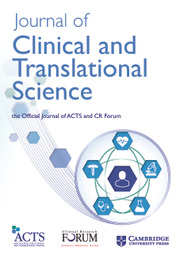No CrossRef data available.
Article contents
81 Fixing or mixing? Improving small sample size longitudinal microbiome models
Published online by Cambridge University Press: 11 April 2025
Abstract
Objectives/Goals: Longitudinal studies capture dynamic host–environment interactions crucial to microbiome research. Commonly used mixed-effects models can struggle with small clinical samples, like many endometrial cancer studies. We will compare them to simpler fixed-effects models, aiming to develop a new fixed-effects differential abundance alternative. Methods/Study Population: Starting with simulated data for linear models with a single treatment effect, we will incrementally increase complexity to reflect real-world microbiome data. To observe conditions of misspecification, simulated data of repeated measures will be generated using different distributions, while varying parameters and inter-class correlation. In each condition, linear fixed- and mixed-effects models will be fitted 1000 times to empirically determine p-value, type 1 error rate, and power. We will increase the verisimilitude of our approach by using endometrial cancer data from our lab as a real background, while adding simulated signals. This data will be used to assess extant differential abundance models against our novel fixed-effects model. Results/Anticipated Results: Our initial findings indicate that fixed-effects models maintain control over type 1 error rates in small samples, while mixed-effects models do not perform as reliably. We are now exploring the effects of confounders on type 1 error rates and power in linear models, while our next step will evaluate generalized linear models in a differential abundance context. We expect that the fixed-effects models will continue to be as reliable as mixed-effects models, while being less computationally complex. After establishing our theoretical basis, our novel model should perform comparably to mixed-effects models on pseudo-simulated endometrial cancer data and better at small sample sizes. We will finally apply our model to real endometrial cancer data to identify microbial markers of disease predisposition. Discussion/Significance of Impact: By characterizing and improving these statistical tools, we seek to increase the robustness and power of microbiome study results (especially at small sample sizes), ultimately supporting better-informed translational research decisions. This work underscores the importance of statistical methods in advancing microbiome research.
Information
- Type
- Biostatistics, Epidemiology, and Research Design
- Information
- Creative Commons
- This is an Open Access article, distributed under the terms of the Creative Commons Attribution-NonCommercial-NoDerivatives licence (https://creativecommons.org/licenses/by-nc-nd/4.0/), which permits non-commercial re-use, distribution, and reproduction in any medium, provided the original work is unaltered and is properly cited. The written permission of Cambridge University Press must be obtained for commercial re-use or in order to create a derivative work.
- Copyright
- © The Author(s), 2025. The Association for Clinical and Translational Science

